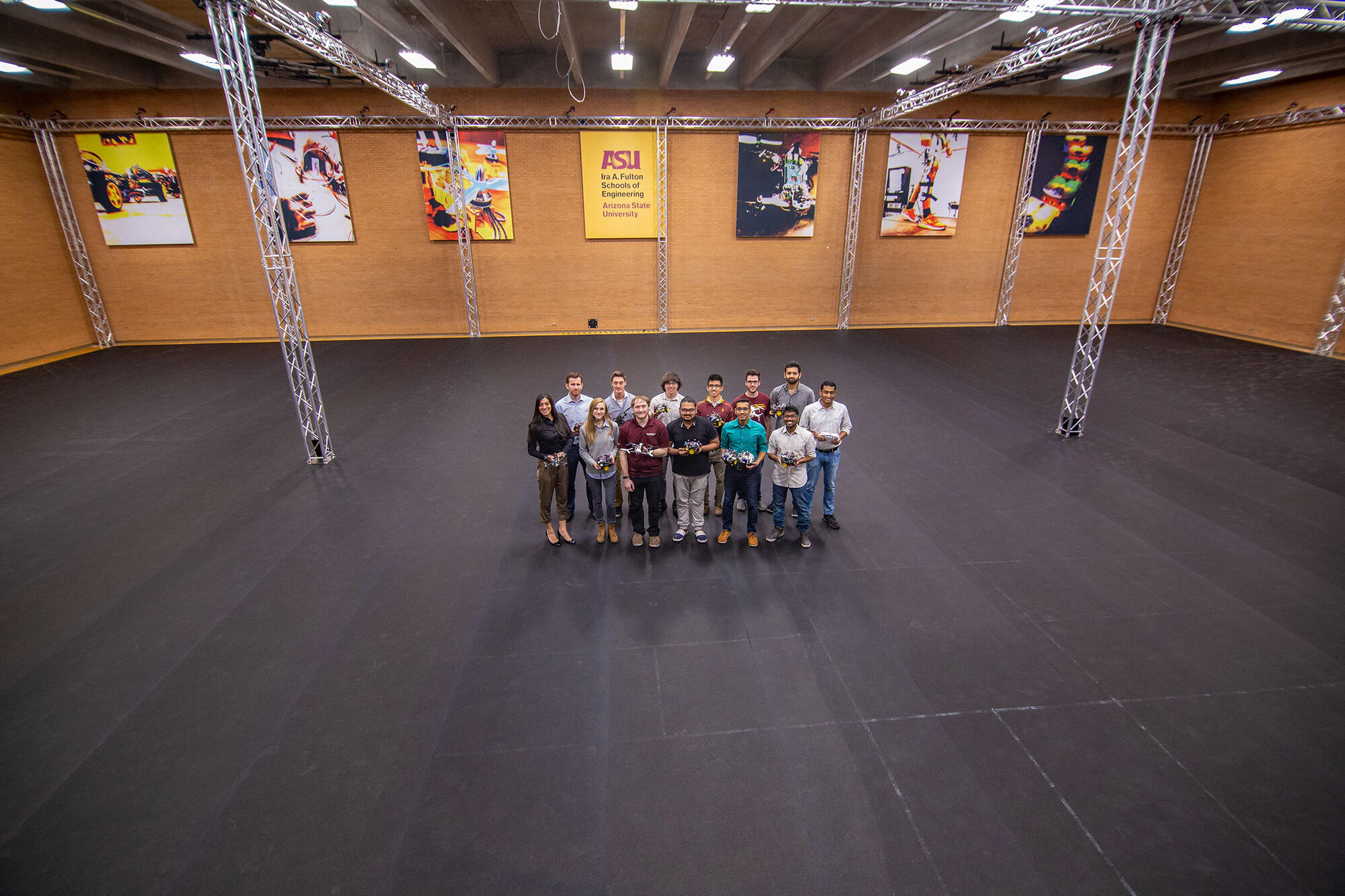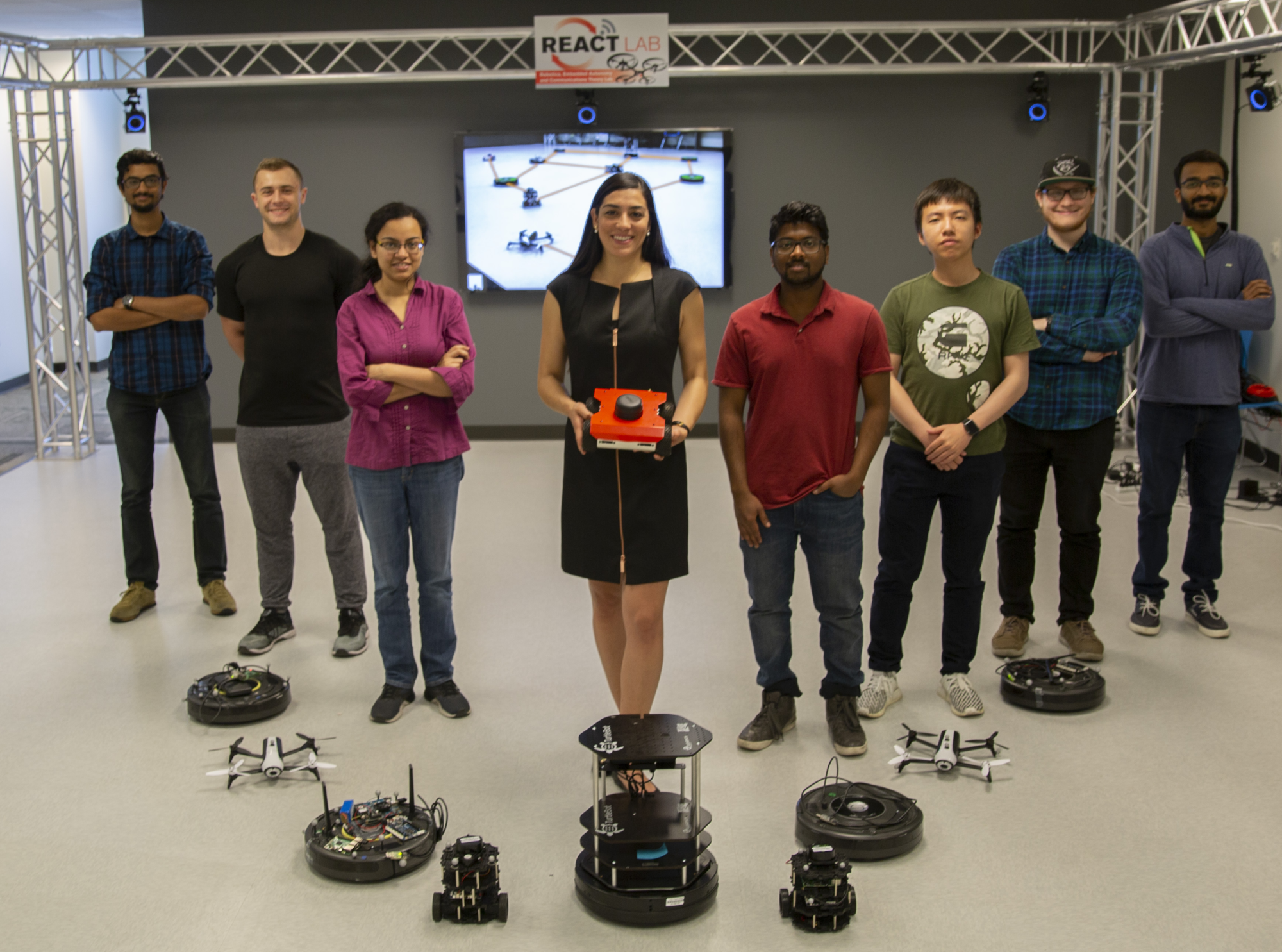Ninad Jadhav, Weiying Wang, Diana Zhang, Oussama Khatib, Swarun Kumar, and Stephanie Gil. 2020. “WSR: A WiFi Sensor for Collaborative Robotics”. Publisher's Version
Selected as a 2020 Sloan Research Fellow
Recipient of the NSF CAREER Award 2019!
Recent Invited Talks
- Information Theory Forum at Stanford University, July 2019
- Control and Robotics Seminar Series at UC Berkeley, July 2019
- Robotics Lunch Colloquium at Stanford University, June 2019
- Learning for Decision and Control (poster) at MIT, May 2019
- Robotics Colloquium at the University of Washington (April 2019)
- Blockchain for Robotics MIT Media Lab (December 2018)
- Presentation of our new L-CSS paper “Resilient Multi-Agent Consensus using Wi-Fi Signals” at CDC (December 2018)
- CCIS colloquium at Northeastern University (November 2018)
Security for multi-robot systems

Read about our research on security for multi-robot systems from MIT News
View our research in:
- Forbes
- Huffington Post
- Newsweek
- Wired
- Financial Times
- MSN
- TechCrunch
- Mashable
- CNET
- Quartz
- Recode
- Gizmodo
- TechRepublic
- PC Mag
- Robohub
- ZDNet
- Digital Trends
- Fast Co. Design
- Express
ASU Drone Studio Unveiled
As one of the vision leads for this new testbed I am proud to say that ASU now has one of the largest drone research testbeds in academia! See the official announcement for more information.

Program Chair SWRS 2019
I served as the Program Chair for the Southwest Robotics Symposium 2019 with over 600 registrants, invited speakers from 13 universities, 5 topic areas in robotics, and plenary talks by Oussama Khatib and Ruzena Bajcsy!
FURI Research
Congratulations to our REACT Lab members Paul Vohs, Thomas Wheeler, and Maxwell Flanagan whose research proposals were selected for FURI 2018/2019!

Recent Publications
- Characterizing Trust and Resilience in Distributed Consensus for Cyberphysical Systems
- Crowd Vetting: Rejecting Adversaries via Collaboration--with Application to Multi-Robot Flocking
- Exploiting Local and Cloud Sensor Fusion in Intermittently Connected Sensor Networks
- Multiagent Rollout and Policy Iteration for POMDP with Application to Multi-Robot Repair Problems
- Plug-and-Play Supervisory Control Using Muscle and Brain Signals for Real-Time Gesture and Error Detection
- WSR: A WiFi Sensor for Collaborative Robotics
Copyright © 2024 The President and Fellows of Harvard College | Accessibility | Digital Accessibility | Report Copyright Infringement


